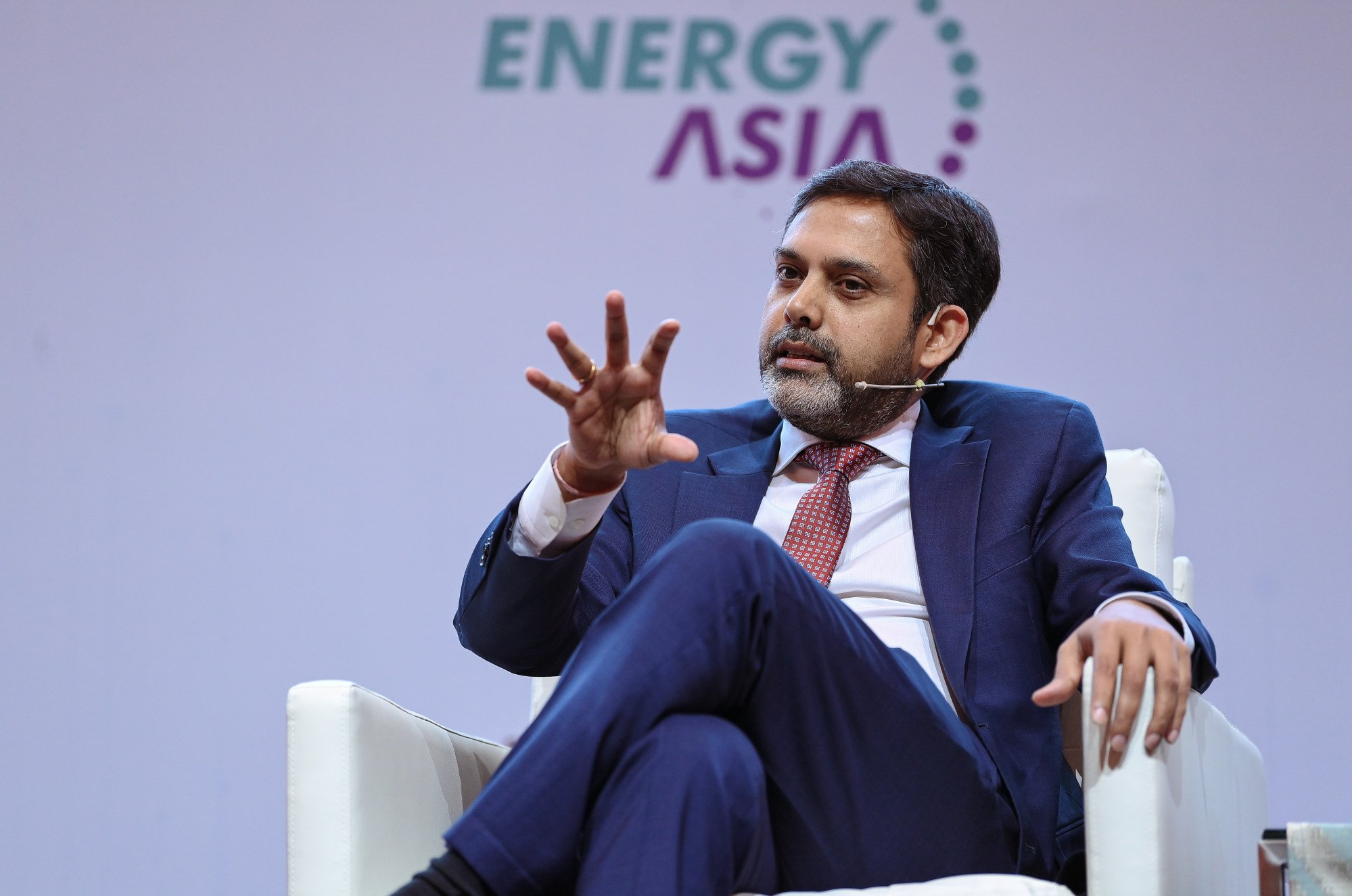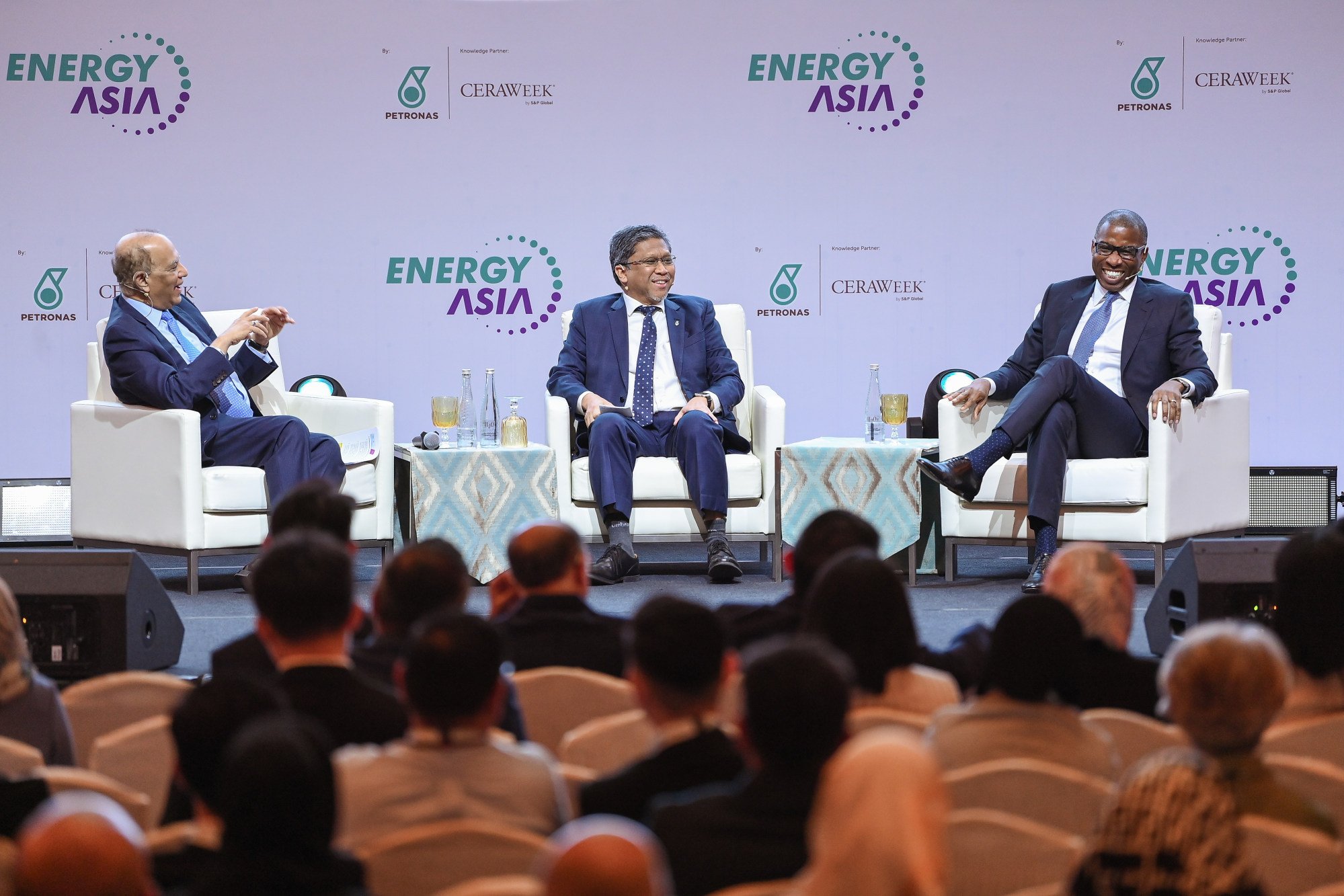“Asia constitutes 60 per cent of the global population and contributes to more than half of all greenhouse gas emissions,” said Datuk Bacho Pilong, senior vice-president of project delivery and technology for the Malaysian energy group Petronas. But he believes the region is positioning itself as an “axis of global growth” with the potential for alternative – and greener – types of development.
“Asia has what it takes to become the hub for talent, innovation, low-carbon investments and clean technology,” said Bacho, who spoke to the South China Morning Post from the inaugural Energy Asia conference that took place in June in Kuala Lumpur, Malaysia. “However, the key to achieving this is to rally all like-minded partners to work together to enhance Asia’s appeal as a sustainable energy hub. As an energy player operating in the heart of the region, Petronas wants to drive this essential discourse to advance collaborations and accelerate actions.”

Sharing this view is Sushil Purohit, CEO of Gentari, a Petronas-owned clean energy solutions provider focused on delivering integrated net-zero solutions. “Governments, businesses and other stakeholders need to join hands to overcome the challenges and look into actively incentivising and accelerating the transition towards a cleaner and more sustainable energy future,” he said in an interview with the Post ahead of the conference.
Tapping into Asia’s potential
Asia’s diverse economic landscape – with different resources, policies and levels of development – calls for extensive collaboration that leverages the expertise of various stakeholders. “A one-size-fits-all approach will not be effective for Asia to decarbonise,” Bacho said. “Instead, we should create differing energy transition pathways through collective actions, such as putting into place comprehensive ecosystems that foster growth.”
Technology will certainly be at the forefront of this urgent push towards an energy transition, Bacho noted. “Deploying technologies remains one of the most important levers to solve the net-zero challenge,” he added. “Technology heightens the accuracy of emissions accounting or measurement, which is crucial in identifying where the major emitters are and managing them accordingly with data-enabled transparency and granularity.”
Bacho believes that building an innovation ecosystem would be conducive to attracting talent and making advancements in clean technology. This kind of development requires the collective effort of all stakeholders, including regional cooperation and government-driven support such as policies for tax incentives or green project allowances. By working cohesively, partners are empowered to address a range of possible challenges, from high upfront costs for green energy deployment to a lack of energy storage solutions.
“These factors might seem like obstacles, but they are opportunities if partners come together to chart the right pathways to address them,” Bacho said.

Purohit pointed out that Asian countries are already heading in that direction: “Governments in Asia are also increasingly implementing supportive policies to incentivise the development and adoption of clean energy technologies, in alignment with their efforts to adhere to the Paris Agreement.”
In addition to becoming an attractive destination for investments in clean technology, the region also holds huge potential to emerge as a global leader in the adoption of renewable energy. It offers abundant resources for solar and wind power as well as hydropower, along with a large pool of skilled labour. Purohit noted that seven of the top 10 countries for employment in the solar photovoltaic industry are located in Asia.
Bacho added that adaptable workers will prove to be essential in the transition to clean energy. “The good news is that 65 to 70 per cent of the skills required in new energy segments, such as carbon capture and storage, hydrogen, solar, wind and electrification, use the same technical disciplines as those in oil, gas and automation,” he said. “Candidates with transferable skills will be in high demand.”
Solutions driven by collaboration and research
With the right pathways in place, Asia will be able to evolve into a hub for clean energy and low-carbon investments. Countries can follow in the footsteps of China, which has already established itself as a major player in the clean technology industry, particularly in solar and wind energy. It made around US$380 billion in investments in 2021, according to the International Energy Agency – more than any other nation – and also accounts for 30 per cent of the global energy workforce.
Malaysia is also making strides towards clean energy, through efforts involving both the government and business sectors. In August 2022, Petronas signed a memorandum of understanding with Malaysian electricity company Tenaga Nasional Berhad to collaborate on innovative solutions for decarbonisation, in support of the country’s goal to become carbon neutral by 2050.

In addition, Petronas is working on the Kasawari carbon sequestration project, which will be one of the biggest offshore carbon capture and storage projects globally when it comes on stream in 2026. It is also partnering with SEDC Energy in Malaysia’s Sarawak state to accelerate the development and adoption of hydrogen and renewable oil as alternative fuels.
A partnership-driven approach has been behind the development of the world’s leading clean energy hubs. “Denmark is considered a leader in wind energy technology and has been at the forefront of the industry for decades,” Purohit explained. “Its success has been achieved via strong public-private collaboration, a supportive business environment and a focus on research and development.”
Beyond regional collaborations, Asian countries can gain valuable knowledge by teaming up with advanced clean energy countries such as Iceland or Norway, both of which use renewable sources for over 98 per cent of their electricity production.
“These collaborations would be vital to learning about their experiences and technologies, as well as allowing opportunities for technology transfer,” Purohit said. “These partnerships can be in the form of joint research projects, exchange programmes and cooperation between businesses and institutions.”
Moving forward, Petronas and Gentari are building on their commitments to a net-zero future. While Gentari is focusing on its core offerings of renewables, hydrogen and green mobility, Petronas has set a series of targets to achieve net zero by venturing beyond its core business.
“Between 2022 and 2026, we aim to allocate 20 per cent of Petronas’ capital expenditure for operational decarbonisation, renewables projects and cleaner energy solutions, to reduce emissions and to grow new energy offerings for our customers in support of their respective net-zero ambitions,” Bacho said.
“We are prioritising technology and innovation, thus we always welcome good solutions. For example, we organised a global hackathon called Race2Decarbonise to search for the best ways to abate greenhouse gas emissions,” he added.
“We hope our thirst and actions towards innovating for the energy transition will inspire others across the region, and even the world, to accelerate their efforts in this collective journey towards a sustainable future.”

